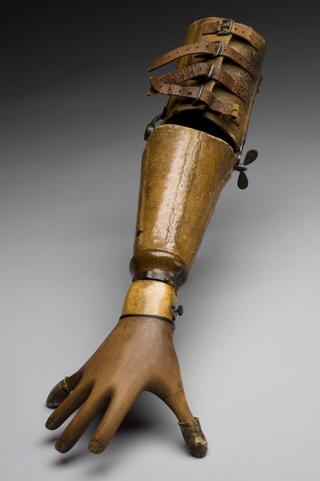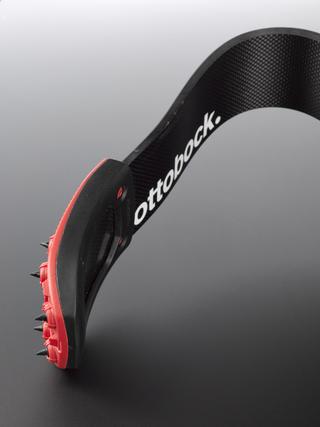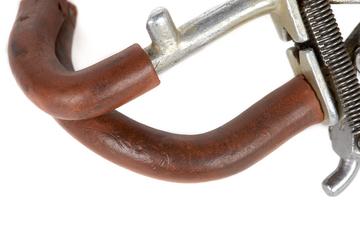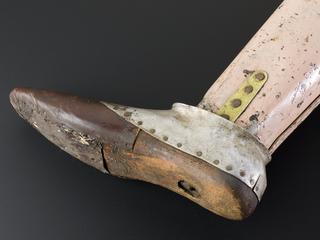

Certalmid hand with fully opposed thumb with a grooved tip. The index and middle fingers are 'canted' to enable a pen or pencil to be held. In the palm is a screw box fitment for securing a driving cup (for holding a ball on the steering wheel of a car). Probably made by A.E. Evans, c.1920.
This artificial hand is made from a lightweight material consisting of muslin, celluloid and certus glue and known as ‘certalmid’. It was one of several innovations developed during the First World War when many thousands of artificial limbs were needed for wounded servicemen.
The hand would have been attached to the rest of an artificial arm. The index and middle fingers of the hand are positioned so a pen or a pencil can be held. In the palm, a device has been screwed in so the wearer can hold a ball on the steering wheel of a car and drive. The wooden thumb, carved to look as though it has a fingernail, is also moveable.
Details
- Category:
- Orthopaedics
- Object Number:
- 1999-597
- Materials:
- wood, certalmid, copper alloy and ferrous alloy
- Measurements:
-
overall: 61 mm x 142 mm x 100 mm, .18kg
- type:
- artificial hand
- credit:
- Richmond Twickenham and Roehampton Healthcare NHS Trust




